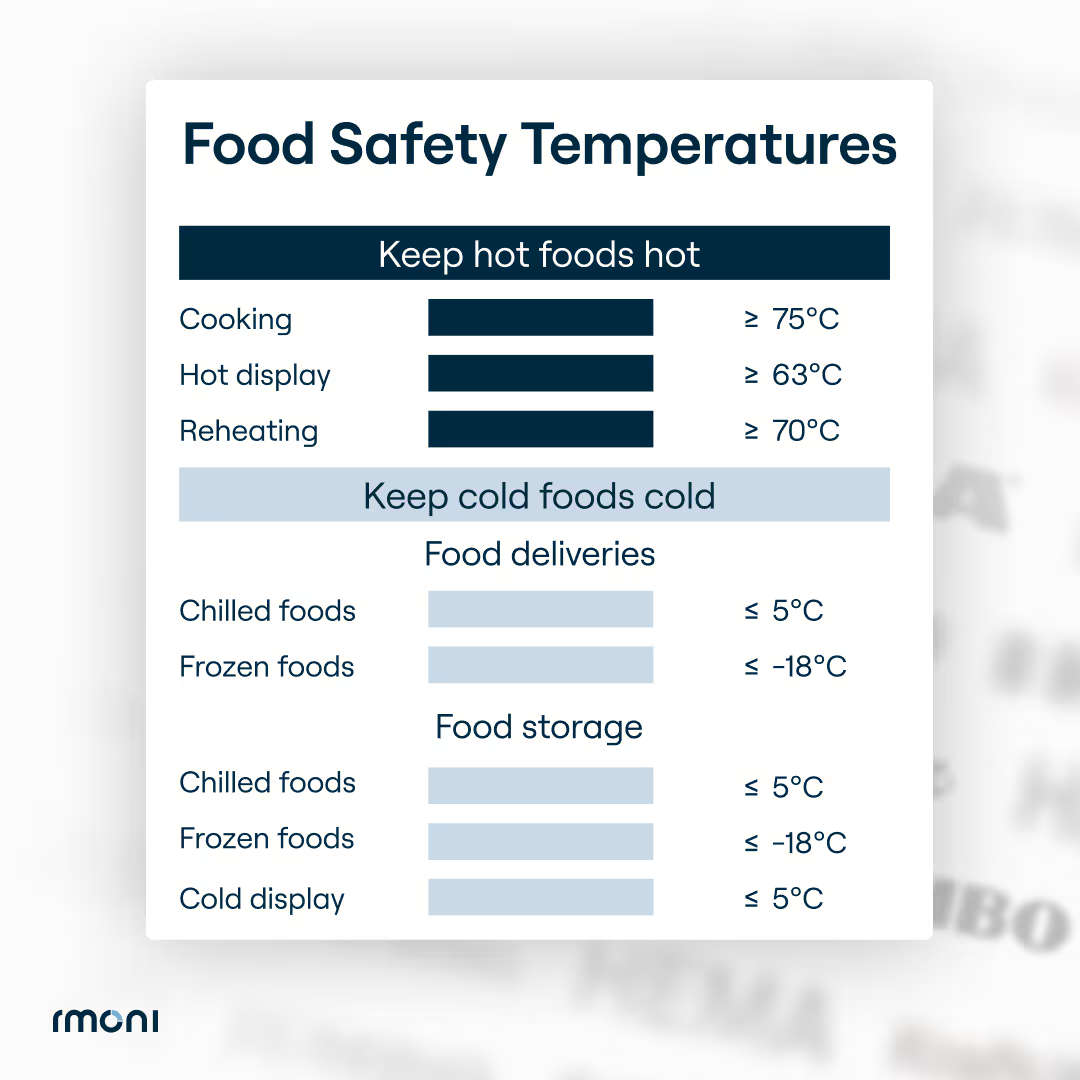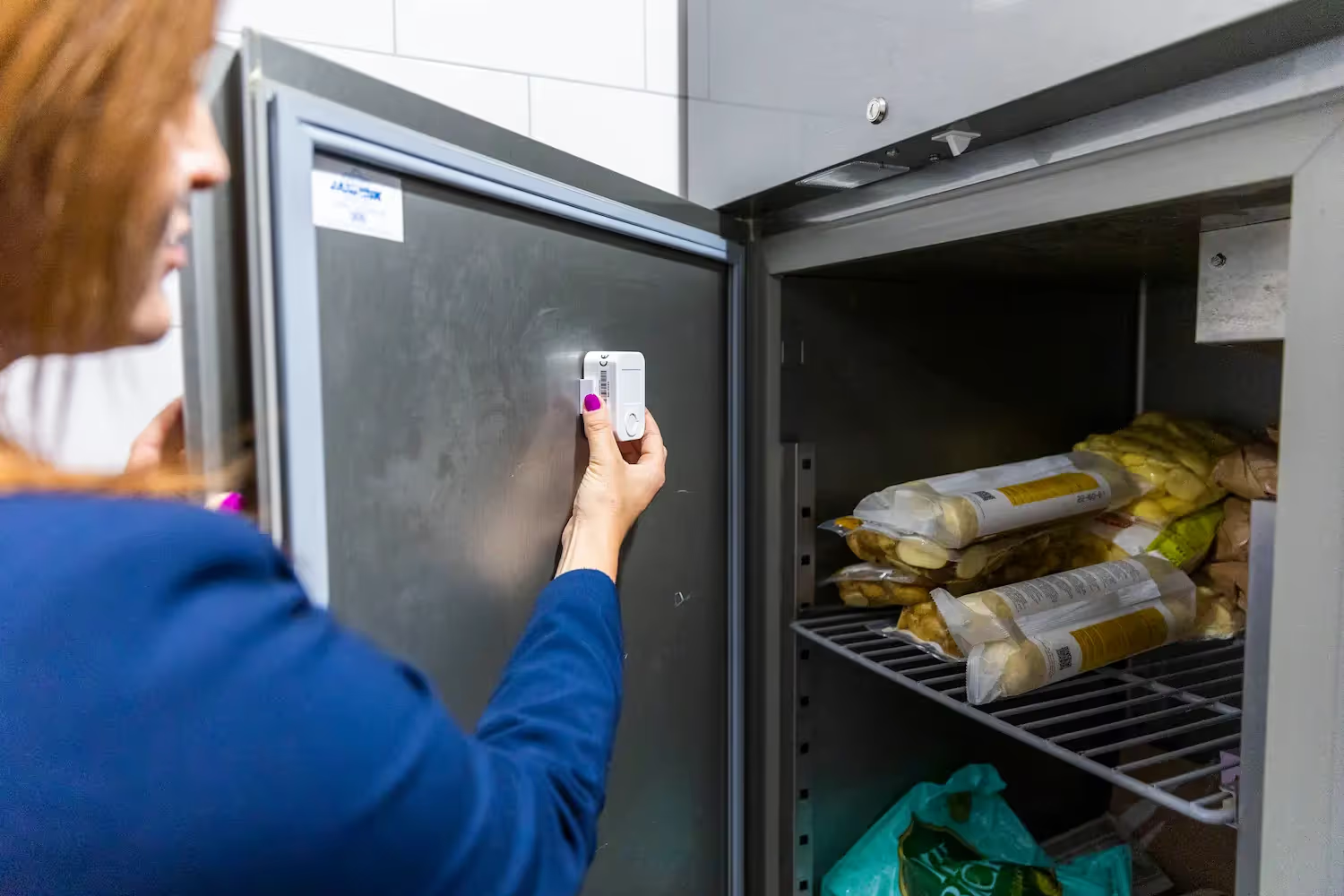How to Use Temperature Measuring Devices in the Food Industry
We compiled a few tips on how to use temperature measuring devices in the food industry.

Food safety and temperature monitoring
Food safety is essential to a successful business in the food industry. Nothing would be more detrimental to your business than food recalls, customers suffering from consuming contaminated food. Very bad for your brand reputation.
Vital to your food safety management operations is making sure you’re in control of temperature. You do this with the right selection of temperature measuring devices.
Temperature measuring devices are essential in the food industry to help ensure food safety. There are many different types of temperature measuring devices available, each with its own advantages and disadvantages.
Also, there are several types of temperature to measure when it comes to food quality and safety:
- Air temperature (in refrigerators and storage areas)
- Core temperature (of cooked and stored food)
- Product temperature (using infrared sensors)
Make sure you’ve got all these areas covered when it comes to your temperature measuring system.

Tips on using temperature measuring devices in the food industry
Here are a few tips on how to use temperature measuring devices in the food industry:
1. Use a thermometer to take the temperature of food products.
Thermometers are the most common type of temperature measuring device used in the food industry. They are accurate and easy to use.
One type of temperature measuring device is a digital thermometer. A digital thermometer is a device that uses a probe to measure the coretemperature and then displays the temperature on a digital display.
Digital thermometers are accurate, easy to use, and relatively inexpensive.
Another type of thermometer is the infrared thermometer. An infrared thermometer is a device that uses an infrared beam to measure the temperature of the surface of a food, increasing the speed at which you can measure food temperature. However, these are a bit more expensive than traditional digital thermometers.
2. Use a temperature logger to track the temperature of food products over time.
Temperature data loggers are an essential tool for food safety and quality control. They help to ensure that the food is kept at the correct temperature during storage and transportation. They also allow the user to track the temperature history of the food, which is important for quality control.

Temperature data loggers can be simple USB loggers, various temperature sensors, a display, a memory logging device and a control unit. The memory logging device stores the temperature data and the control unit controls the overall operation of the device.
Most temperature loggers allow the user to set the logging interval and start/stop time. Some models also have an alarm function that alerts the user when the temperature exceeds the preset limit.
3. Use a combination of temperature measuring devices to get the most accurate results.
Using a combination of devices will help to ensure that the temperature of food products is accurate and consistent. Thermometers are best used for measuring the temperature of food at the time it is being cooked. However, they can also be used to measure the temperature of food storage areas, such as refrigerators and freezers.
Temperature loggers are best used for monitoring the temperature of food storage areas over time. They can also be used for measuring the temperature of food during transport.
The best thing you can do is using a combination of different temperature measuring devices, linked together (IoT) for continuous monitoring. This is more commonly known as Digital Quality Control.
When you’re monitoring food quality this way, you can prevent potential hazards more easily, as your digital quality management system can notify you whenever limits are about to be exceeded.
4. Calibrate your temperature measuring devices properly
To ensure accurate temperature monitoring, devices should be calibrated initially, but also regularly calibrated again. In many countries this is a legal obligation to do this at least once a year.
It’s also very important to document the calibration procedure and readings for future reference. This will allow for easier and safer recalibration.
Example of using the right food temperature measuring devices
We’re sure you know IKEA, the Swedish furniture giant selling products around the world. Most IKEAs also have in-store restaurants, meaning they need to ensure food safety, somehow.
The Dutch branch of IKEA uses Rmoni’s digital quality management system to continuously monitor the temperature of all cooling, refrigeration, and heating appliances at the IKEA departments.
When temperatures rise too high or drop too low, the temperature monitoring sensors automatically send out an email and/or a SMS notification. IKEA can adjust alarm settings according to their needs.
How’s that for automated temperature measuring and quality control?

